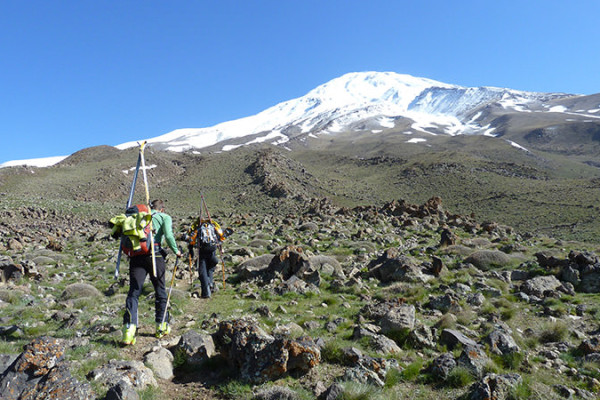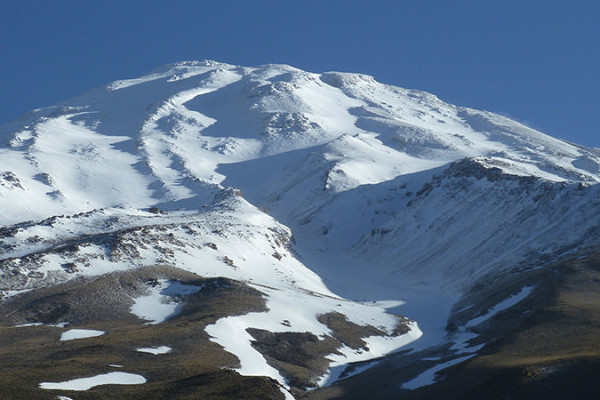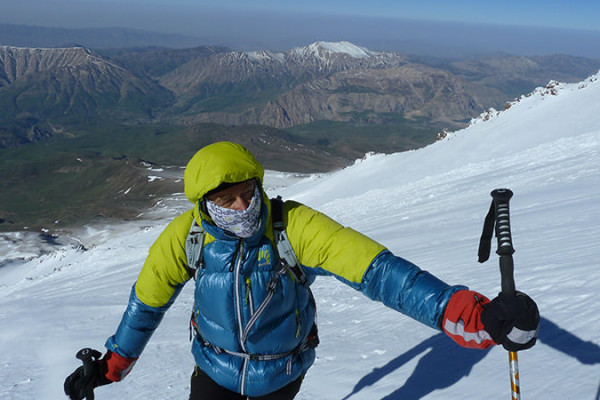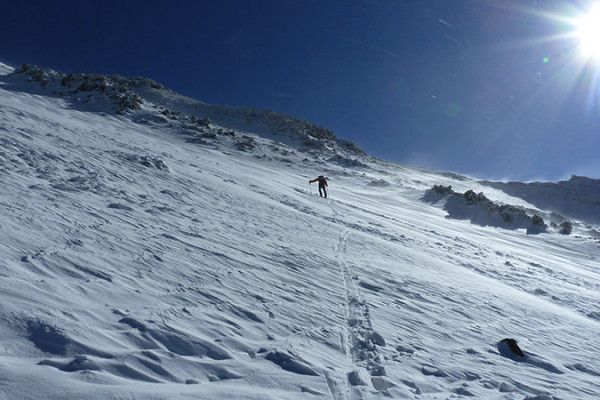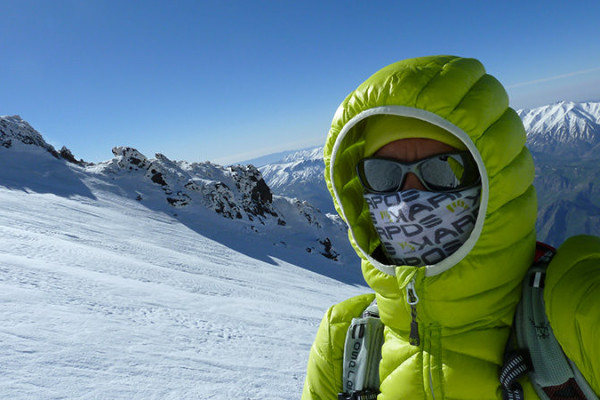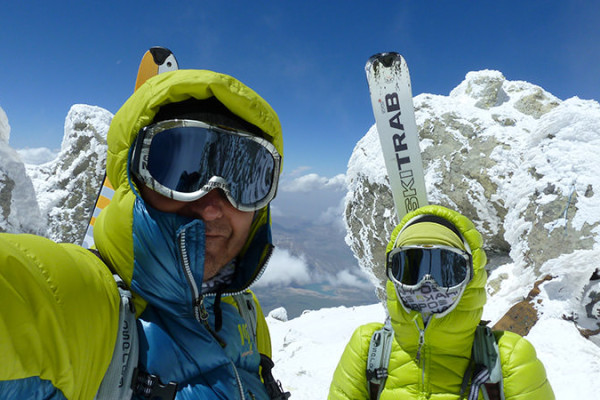Viaggio in Persia
Tutto inizia un anno fa, quando ci salutammo a Samagaon, in Nepal, scambiandoci indirizzi e-mail e inviti a un possibile nuovo incontro nei nostri rispettivi paesi. Il nome di Hosein, che arrivava dall’Iran, era inserito nel nostro permesso di scalata al Manaslu; Un bel tipo amichevole, disponibile, con il quale stringemmo un’amicizia improvvisata ma dalle buone premesse. Poi si torna a casa, e Facebook sostituisce la tenda mensa, dove era solito incontrarsi. Dopo un attenta ricerca e con l’aiuto di Google Earth, scoviamo la montagna più alta, il Damavand (5671 m), con i suoi pendii innevati, la parete Yafteh Wall e la zona di Polekhab, dove si può anche arrampicare. Hosein ci ospita a casa sua, ci guida, ci consiglia. Per dieci giorni ci accompagna, a volte con la sua fidanzata Homa, in giro per l’Iran, a visitare città come Korramabad, Kashan o Isfahan, ad arrampicare e sciare, guidando per ore la sua scassata Khodro Samand lungo infinite strade nel deserto. Per salire il Damavand, il vulcano più alto dell’Asia, poco a nord est di Teheran, bisogna richiedere il permesso all’ingresso del Parco. Poi con il fuoristrada si arriva ai 3020 metri di Saheb al Zaman Moeque, dove termina la strada sterrata. Il soleggiato versante meridionale è il più indicato per salire la montagna quando ancora fa freddo, prima dell’estate. Passiamo la notte nel piccolo e spoglio rifugio non gestito per avviarci all’alba, zaini e sci in spalla, fino alla prima neve, 500 metri più in alto. Il clima locale si rivela particolarmente bizzarro, con sequenze quasi costanti di bello e brutto, a giorni alterni. Inoltre la relativa vicinanza del Mar Caspio è causa di venti molto forti e persistenti, che si rivelano molto utili nella parte terminale della montagna, altrimenti inaccessibile a causa delle micidiali esalazioni di zolfo dal terreno, ma possono anche rendere estremamente bassa e difficile da sopportare, la temperatura percepita. A 4220 metri di quota arriviamo a Bargah Sevom, chiamato anche “camp 3”, dove un grande rifugio di recente costruzione, gestito tutto l’anno da giovani iraniani, ci ospita per la notte. Come sull’Ararat, la struttura a cono della montagna mostra pendii ripidi ma costanti, premessa di una faticosa salita appagata poi da un’entusiasmante e veloce discesa con gli sci. Solo in tarda mattinata dopo il miglioramento delle condizioni atmosferiche ci azzardiamo a calzare gli sci ma poco oltre i 5000 metri di quota siamo costretti ad arrenderci a causa della nebbia che rende impossibile l’orientamento. La parte terminale del Damavand sembra un luogo irreale, dantesco. La neve lascia il posto a gialle pietre di zolfo fra imponenti esalazioni di fumo velenoso, disegnate con fantasia da formazioni di ghiaccio e neve trasportati con forza dal vento. Lasciamo il paese con rammarico, piacevolmente soddisfatti oltre le aspettative. Questo grazie soprattutto all’ospitalità della gente incontrata, di Hosein al quale lascio in regalo tutta la mia personale attrezzatura da sci alpinismo, certo che non sarà mai comunque abbastanza per ripagare la sua discreta disponibilità ed amicizia.
Trip to Iran
It all started a year ago, when we said goodbye in Samagaon, Nepal, exchanging e-mails and invitations to possibly meet again in our respective countries.
Hosein, who came from Iran, was included in our climbing permit for Manaslu. He was a nice guy, friendly and helpful, and we struck up a friendship that was impulsive but well grounded. Then we returned home, and Facebook replaced the mess tent where we used to meet.
After careful research and with the help of Google Earth, we discovered the highest mountain, the Damavand (5,671 meters), with its snow-covered slopes, the Yafteh Wall, and the Polekhab area, where it is also possible to climb.
Hosein hosted us at his house, guided us and advised us. For ten days he accompanied us, sometimes with his girlfriend, Homa, around Iran, to visit cities such as Korramabad, Kashan and Isfahan, and to climb and ski, driving for hours in his beat-up Khodro Samand over endless roads in the desert.
To climb the Damavand, the highest volcano in Asia, just northeast of Tehran, you must request permission at the entrance to the park. With a four-wheel drive you can then reach 3,020 meters at Saheb Zaman Moeque, where the dirt road ends.
The sunny southern slope is the best side for climbing the mountain when it’s still cold, before summer. We spend the night in the small, deserted bare hut in order to get started at dawn, with backpacks and skis, heading up to the first snow 500 meters higher.
The local climate is bizarre, with almost constant shifts between good and bad weather, every other day. In addition, the relative nearness of the Caspian Sea causes very strong and persistent winds that prove useful toward the top of the mountain, which would otherwise be inaccessible due to the deadly sulfur fumes emerging from the soil. But the winds can also cause the perceived temperature to drop unbearably low.
At 4,220 meters above sea level we reach Bargah Sevom, also known as camp 3, where we spend the night in a large, newly built shelter that is managed throughout the year by young Iranians.
As on Ararat, the conical shape of the mountain means steep but constant slopes, suggesting a strenuous climb rewarded by a fast, exciting downhill on skis.
Not until late morning, after an improvement in the weather, do we venture to put on our skis, but at just above 5,000 meters’ elevation we are forced to give up because the fog makes orientation impossible.
The top of the Damavand seems an unreal place, Dantean. The snow gives way to impressive puffs of poisonous smoke and yellow stones that are fancifully shaped by ice formations and snow transported by the force of the wind.
We leave the country with regret, pleasantly satisfied beyond our expectations. This is due primarily to the hospitality of the people we met and of Hosein, to whom I give all my personal ski mountaineering gear, knowing that it will never be enough to repay his attentive helpfulness and friendship.
Experience by Maurizio Giordani

